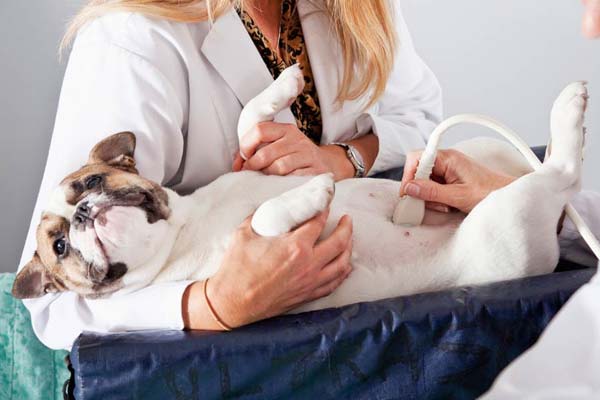Can Foxtails Kill Dogs? Unveiling the Truth and Dangers
Foxtails, a type of grass found in outdoor areas, can pose a significant danger to dogs. The sharp, barbed seeds of foxtails can quickly become lodged in a dog’s paws, ears, throat, and skin, causing discomfort and potential harm.
Depending on where the foxtail enters the body, it can migrate and cause irritation or complications. Foxtail ingestion or contact symptoms may include swallowing difficulties, excessive grass eating or licking, pawing at the ears, shaking the head excessively, and redness or irritation in the eyes.
In severe cases, foxtails can even enter the respiratory tract and cause difficulty breathing or lung abscess formation. Prompt veterinary care is recommended if any signs of foxtail complications are observed.
Treatment for foxtail-related issues can range from a few hundred to thousands of dollars, depending on the severity and necessary interventions.
Preventing Foxtail Injuries in Dogs
Educate yourself about foxtail-prone areas:
Research and familiarize yourself with outdoor areas where foxtails are prevalent. This knowledge will allow you to avoid these areas during walks or off-leash activities with your dog.
By steering clear of foxtail-infested spaces, you can minimize the chances of your dog coming into contact with these dangerous grass seeds.
Keep your dog on a leash:
Always keep your dog on a leash during outdoor excursions, especially in areas known for foxtails. This helps ensure that your dog stays away from patches of grass or vegetation that may harbor foxtails.
Additionally, a leash allows you to have better control over your dog’s movements and prevents them from wandering into potentially hazardous areas.
Regularly inspect your dog’s ears, paws, and fur:
After outdoor activities, thoroughly check your dog’s ears, paws, and fur for any signs of foxtails. These grass seeds can easily become embedded in your dog’s skin or coat. Promptly removing any foxtails will prevent them from causing discomfort or potential harm.
| Preventive Measures | Benefits |
|---|---|
| Educate yourself about foxtail-prone areas | Minimizes the risk of dog coming into contact with foxtails |
| Keep your dog on a leash | Enhances control over your dog’s movements and prevents access to foxtail-infested areas |
| Regularly inspect your dog’s ears, paws, and fur | Allows for early detection and removal of any embedded foxtails |
Symptoms of Foxtail Ingestion in Dogs
Signs of Foxtail Complications
A dog ingesting a foxtail can cause a range of symptoms depending on where the foxtail becomes lodged in the body. Common signs of foxtail ingestion include:
- Swallowing difficulties
- Excessive grass-eating or licking behavior
- Drooling
- Obsessive licking of the paws or other surfaces
- Pawing at the ears or shaking the head excessively (if foxtails are in the ears)
- Redness or irritation in the eyes (if foxtails are in the eyes)
| Symptom | Description |
|---|---|
| Swallowing difficulties | Dog struggles to swallow food or water |
| Excessive grass-eating or licking behavior | Dog constantly chews on grass, or licks surfaces excessively |
| Drooling | Excessive drooling or salivation |
| Obsessive licking of the paws or other surfaces | Dog continuously licks its paws or other parts of the body |
| Pawing at the ears or shaking the head excessively (if foxtails are in the ears) | Dog shows signs of discomfort in the ears, pawing at them or shaking the head vigorously |
| Redness or irritation in the eyes (if foxtails are in the eyes) | Visible redness or irritation in the eyes, accompanied by excessive blinking or rubbing |
Foxtail Removal in Dogs
Dogs that have encountered foxtails may require professional veterinary care for safe and thorough removal. The removal process can vary depending on the location and depth of the foxtail. Sometimes, sedation may be necessary to alleviate discomfort and facilitate the extraction process.
A veterinarian may use specialized tools such as forceps or an otoscope to visualize and remove foxtails, especially in sensitive areas like the ears or nose.
The veterinarian will carefully examine the dog’s body for any signs of foxtails and take appropriate measures to remove them without causing further harm.
After a successful foxtail removal, the veterinarian will provide specific instructions for aftercare to ensure proper healing and minimize the risk of infection.
Pet owners should closely monitor their dogs for any signs of complications, such as swelling, discharge, or persistent discomfort, and promptly contact the veterinarian if any concerns arise.
| Foxtail Removal in Dogs | Description |
|---|---|
| Sedation | Administered if necessary to alleviate discomfort and facilitate extraction in sensitive areas. |
| Specialized Tools | The veterinarian uses forceps or an otoscope to visualize and remove foxtails. |
| Aftercare | The veterinarian provided instructions for proper healing and monitoring for signs of complications. |
Dog Safety and Foxtails
Preventive Measures
There are several steps you can take to protect your dog from foxtails:
- Keep your dog on a leash when in areas known to have foxtails.
- Regularly inspect your dog’s ears, paws, and fur after outdoor activities and promptly remove any embedded foxtails.
- Avoid allowing your dog to eat grass or lick surfaces outdoors, as foxtails can easily be ingested.
- Maintain a clean and weed-free yard to reduce the risk of foxtail exposure.
Supervision and Vigilance
Being vigilant and actively supervising your dog’s activities is crucial in ensuring their safety. Keep your dog on a leash and closely monitor their movements when in areas with foxtails.
Avoiding areas with foxtails altogether, whenever possible, provides the most definitive protection for your dog.
Veterinary Care and Awareness
If your dog has encountered foxtails and shows any signs of complications, it is essential to seek veterinary care promptly.
Veterinarians have the expertise and tools to safely remove embedded foxtails and provide appropriate treatment for any associated infections or injuries.
It is also advisable to be prepared for potential financial implications by considering pet insurance or other financial planning strategies.
| Preventive Measures | Supervision and Vigilance | Veterinary Care and Awareness |
|---|---|---|
| Keep dogs on a leash in foxtail-prone areas | Vigilantly supervise dogs in areas with foxtails | Seek prompt veterinary care for complications |
| Regularly inspect and remove embedded foxtails | Avoid areas with foxtails whenever possible | Consider pet insurance for potential costs |
| Avoid allowing dogs to eat grass or slick surfaces | ||
| Maintain a clean and weed-free yard |
Veterinary Care for Foxtail Injuries in Dogs
Whether it involves removing embedded foxtails or treating associated infections or injuries, veterinary care is crucial for a dog’s well-being.
The cost of veterinary care for foxtail injuries can vary depending on the severity of the situation and the required interventions.
Pet owners should be prepared for potential financial implications and consider options such as pet insurance or financial planning strategies to ensure their dogs receive the best care in case of foxtail-related injuries.
In addition to providing medical treatment, veterinarians can offer valuable guidance on preventing foxtail injuries in the future. They can educate pet owners about the dangers of foxtails and suggest preventive measures to keep dogs safe from these hazardous grass seeds.
Dog owners can proactively protect their furry friends from potential harm by partnering with a trusted veterinarian.
FAQ
Can foxtails kill dogs?
While foxtails can pose significant dangers to dogs, they are not typically fatal. However, if left untreated, foxtails can cause serious complications and infections that may ultimately lead to severe health issues or even death. It is crucial to seek prompt veterinary care if a dog encounters foxtails and shows any signs of complications.
What are the dangers of foxtails to dogs?
Foxtails can become embedded in a dog’s paws, ears, throat, and skin, causing discomfort and potential harm. Depending on their location, foxtails can migrate and cause irritation or complications. Ingesting foxtails can also lead to swallowing difficulties. In severe cases, foxtails can even enter the respiratory tract and cause difficulty breathing or lung abscess formation.
How can I prevent foxtail injuries in dogs?
To protect your dog from foxtail injuries, it is essential to educate yourself about areas where foxtails are present and avoid these areas when possible. Keep your dog on a leash during walks or off-leash activities in areas with foxtails.
Regularly inspect your dog’s ears, paws, and fur after outdoor activities, and avoid allowing them to eat grass or lick surfaces outdoors. Maintaining a clean and weed-free yard can also reduce the risk of foxtail exposure to dogs.
What are the symptoms of foxtail ingestion in dogs?
Foxtail ingestion or contact symptoms may include swallowing difficulties, excessive grass eating or licking, pawing at the ears, shaking the head excessively, and redness or irritation in the eyes.
Dogs may also exhibit drooling or obsessive licking of the paws or other surfaces. In severe cases, foxtails can cause respiratory distress, leading to coughing, difficulty breathing, or malaise.
How is foxtail removal performed in dogs?
A veterinarian should perform foxtail removal to ensure safe and thorough extraction. The removal process may involve sedating the dog, especially if the foxtail is deeply embedded or located in sensitive areas such as the ears or nose.
Depending on the situation, the veterinarian may use tools such as forceps or an otoscope to visualize and remove the foxtail.
In some cases, foxtail removal may require an outpatient or surgical intervention. It is essential to follow the veterinarian’s instructions for aftercare and monitor the dog for any signs of complications or infection.
How can I ensure my dog’s safety in areas with foxtails?
To ensure your dog’s safety in areas with prevalent foxtails, it is crucial to be vigilant and watchful of their activities, especially when off-leash or in areas with known foxtail presence.
Keep your dog on a leash and provide close supervision to prevent them from coming into contact with foxtails.
Avoiding areas with foxtails whenever possible is the best way to protect dogs from exposure. Familiarize yourself with other dangerous plants and educate yourself about your local environment to protect your furry friend from potential hazards.
What should I do if my dog encounters foxtails and shows signs of complications?
Seeking veterinary care is essential if your dog has encountered foxtails and shows any signs of complications. Veterinarians have the expertise and tools to safely remove embedded foxtails and provide appropriate treatment for any associated infections or injuries.
The cost of veterinary care for foxtail injuries can vary depending on the severity and required interventions, ranging from a few hundred to thousands of dollars.
It is crucial to be prepared for potential financial implications and consider pet insurance or other financial planning strategies to ensure the best care for your dog in case of foxtail-related injuries.






